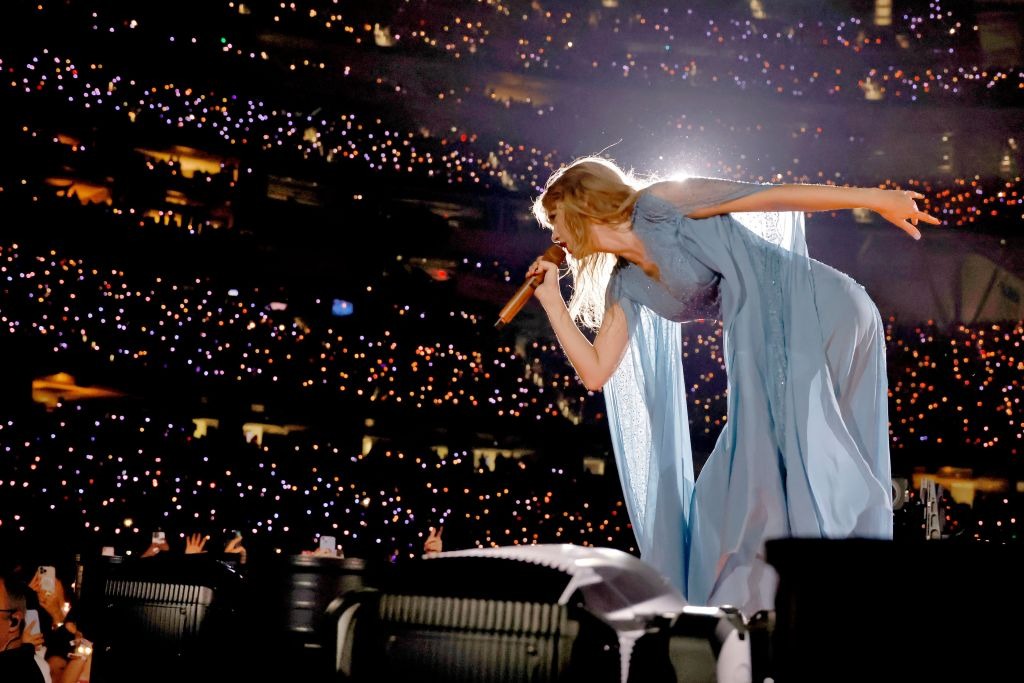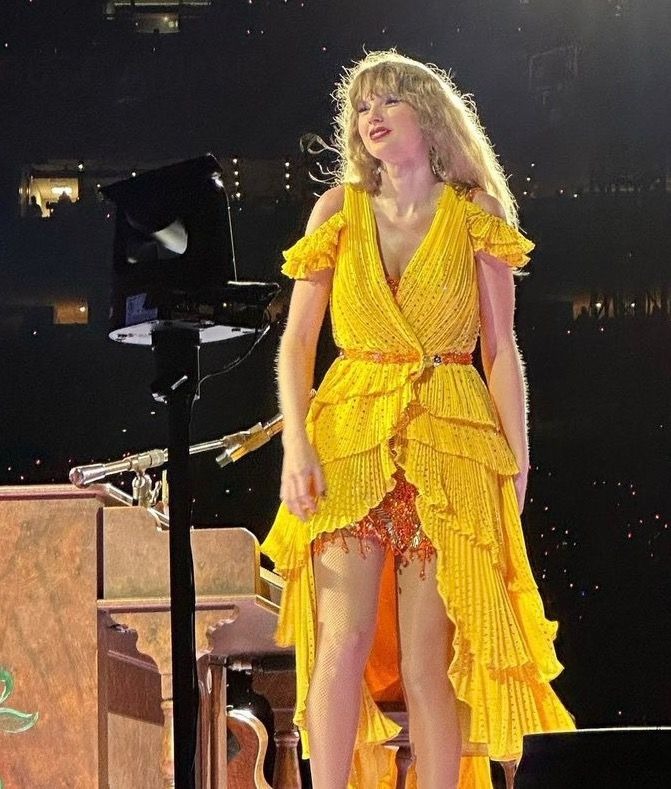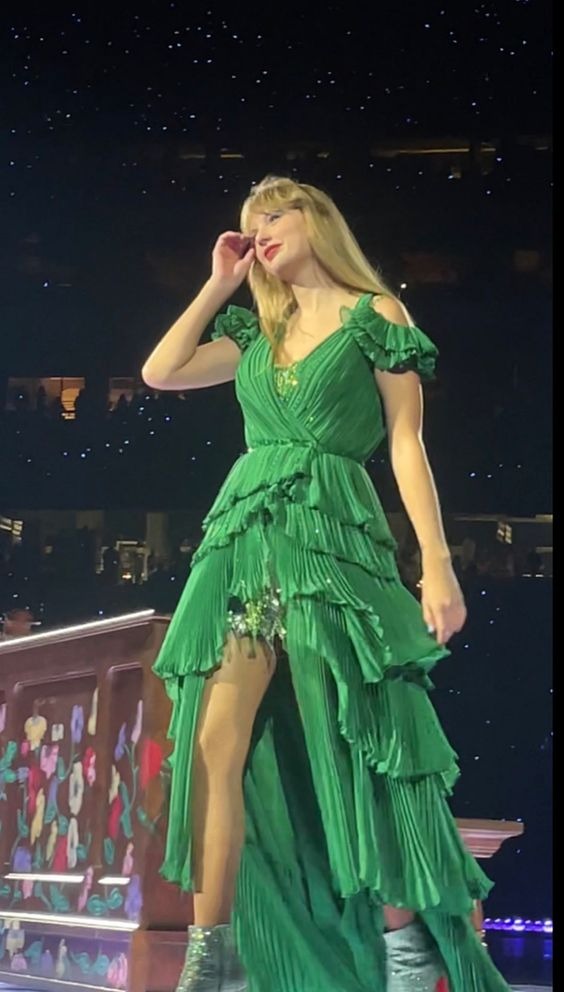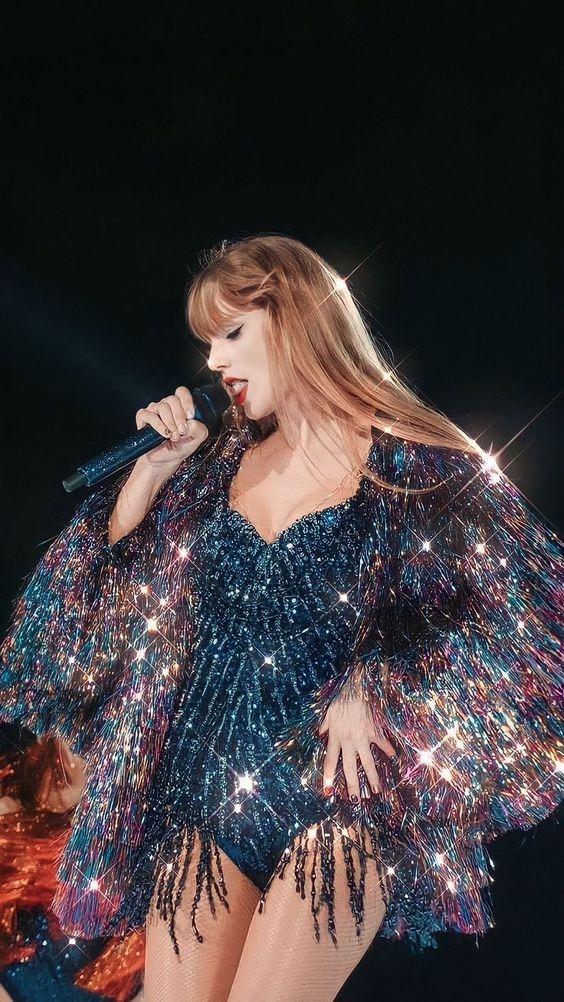The Staggering Economic Impact of Taylor Swift’s Eras Tour

ou don’t have to be a Swiftie to have been touched in some way by Taylor Swift’s Eras Tour, a stadium arena experience that kicked off in March. The tour, which pays homage to every era of the artist’s illustrious 17-year career, is set to become the biggest tour of all time only a third of the way through its run.
If you live in one of the 20 locales Swift, 33, performed at in the last five months, your city has likely seen a boost in revenue from the hundreds of thousands of attendees who traveled from near and far. If you don’t—or simply couldn’t snag tickets due to the cost or the now infamous Ticketmaster snafu—chances are you’ve seen clips of the three-and-a-half hour show from celebrities’ Instagram stories.

While there’s much to say about the music, costumes, and production, the impact of the Eras Tour is starkly reflected in the numbers: a projected gross of $2.2 billion in North American ticket sales alone, and hundreds of millions of streams, reaching a nearly 80% spike in those listening to her music catalog in the weeks after the tour kicked off
After 53 shows, the first U.S. leg of the tour came to a close on Aug. 9. Swift originally announced 27 shows and has since extended the tour, adding new dates in cities like New Orleans, Indianapolis, and Toronto, which are all now anticipating a local economic boost. Eras is set to go international this month, starting with four shows in Mexico City, continuing its five-continent run through November 2024

Swift’s tour is in a league of its own, even among legendary groups like the Rolling Stones who have been touring for decades, other major touring artists like Harry Styles and Beyoncé and contemporaries like Adele with sold-out Las Vegas residencies, as the singer-songwriter brings her mega tour directly to her dedicated fans in various cities for multiple nights.
The reasons behind the Eras Tour’s unmatched success are many. Nora Princiotti, staff writer at The Ringer and co-host of the podcast of Every Single Album: Taylor Swift, attributes part of the tour’s success to the sheer depth and popularity of Swift’s music catalog. “I don’t know that anybody envisioned a tour of this scale ever happening. She can go three and a half hours and just hit after hit after hit,” says Princiotti.
There’s also the timing: The tour has become the perfect outing for concert-goers itching for a post-pandemic live music immersive experience. “We are in an experience economy where people crave going out and participating in social events,” says Alice Enders, a music industry analyst at Enders Analysis and a former senior economist at the World Trade Organization. “It’s no surprise that people are flocking to this Eras Tour experience in what is increasingly an otherwise digital environment we live in.”
And fans are acutely aware of Swift being connected to her body of work in a way that few artists are—she writes all her songs, has been protective of her music in the streaming boom, and is now releasing re-recordings of her discography to reclaim their master rights. It all adds up to a music industry enterprise the likes of which the world has never seen.
The economic and cultural impact of the Eras Tour
Analysts estimate that the Eras Tour will likely surpᴀss the $1 Billion mark next March, while Swift is touring internationally. If this projection holds true, she will achieve the milestone of the biggest tour in music history, surpᴀssing Elton John’s multi-year farewell tour, which wrapped up earlier this summer and holds the current record of $939 million. The Eras Tour would then continue for another seven months before concluding in November of 2024 in Toronto—that is, unless rumors that Swift will release more dates come to fruition.
But the money goes far deeper than just net profits. The Eras Tour is projected to generate close to $5 billion in consumer spending in the United States alone. “If Taylor Swift were an economy, she’d be bigger than 50 countries,” said Dan Fleetwood, President of QuestionPro Research and Insights, in a story for GlobalNewsWire. On the opening night in Glendale, Ariz., the concert brought in more revenue for local businesses than Super Bowl LVII, which was held back in February in the same stadium. To use that event as a comparison, Swift has been performing the equivalent of two to three Super Bowls every weekend for the past five months (and six of seven nights at her last round of shows in Los Angeles).
Typically, every $100 spent on live performances generates an estimated $300 in ancillary local spending on things like H๏τels, food and transportation. But for the Eras Tour, Swifties are taking this to the next level, dropping an estimated $1,300-$1,500 on things like outfits and costumes, merchandise, dining, and travel—boosting local economies by hundreds of millions of dollars in one weekend.

The Illinois governor credited the musician with reviving the state’s tourism industry after her three nights in Chicago. She was even mentioned in a report by the Fed, crediting her with fueling the national tourism industry.
The enthusiasm is so great that cities along her tour have experienced supply shortages. For one example: Swift mentions “friendship bracelets” in the song You’re on Your Own, Kid, off her most recent album Midnights. Swifties have taken this and run with it. Every concert is filled with tens of thousands of fans wearing and exchanging beaded bracelets spelling out the names of Swift songs and colloquialisms all the way up their arms. While this bracelet economy has brought new revenue to local businesses, businesses have also reported bead and sequin shortages.
This enthusiasm comes despite broader economic challenges. “There’s a cost of living crisis and people are still forking out thousands of dollars to see Taylor Swift,” says Enders. Despite this, a national study of concertgoers shows that even with an average of more than $1,300 spent per event, 91% said they would go again.

Not only is the Eras Tour an economic boon, but it has also become a cultural phenomenon. Every city Swift has visited over the course of the tour so far has pulled out all of the stops for her: Minneapolis was renamed “Swiftie-apolis;” Santa Clara, Calif., made her the honorary mayor; the New Jersey governor named the state sandwich of New Jersey after her. Now world leaders like the Chilean President, the mayor of Budapest, and Canadian Prime Minister Justin Trudeau are asking her to bring the tour to their countries. The FBI tweeted out a Taylor Swift pun in July.




